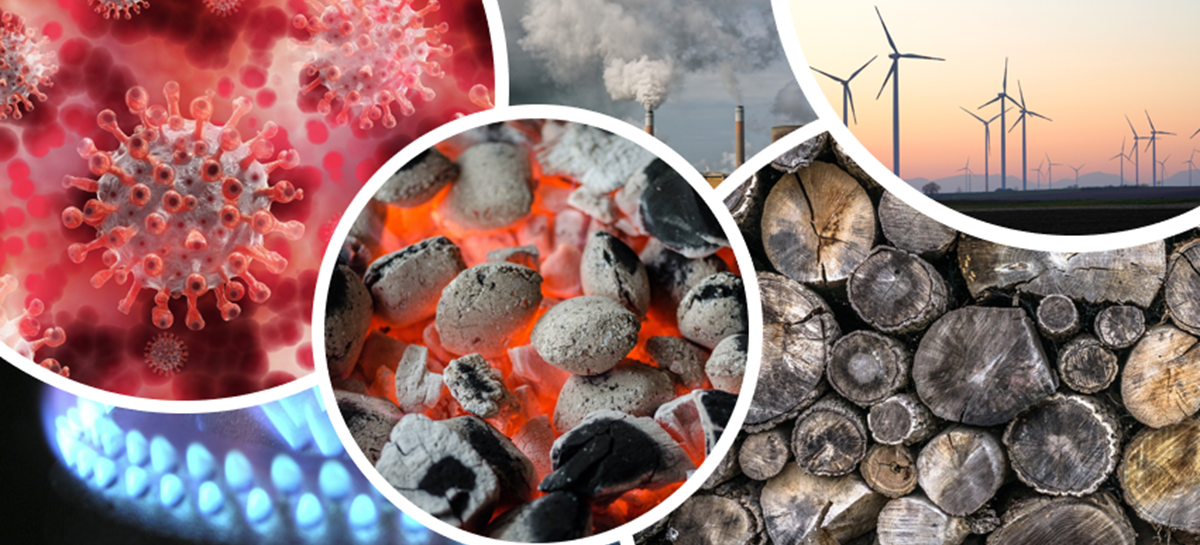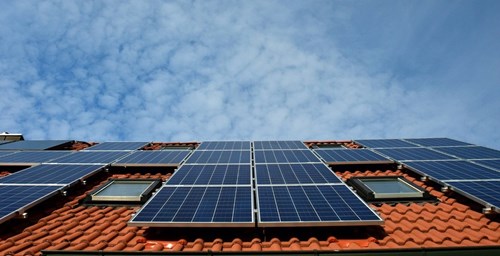
Energy, Culture & COVID-19
To begin thinking about the implications of the COVID-19 pandemic for household energy cultures and energy transitions, it is worth firstly understanding that an energy system essentially represents all the social and technical elements connecting the supply of energy to its consumption. Therefore, an energy transition is a fundamental realignment of this system’s policies, science, technologies, markets, cultures, and industries which usually unfolds over decades or centuries (see Geels (2018)).
So, what do modern energy transitions look like?


For instance, in Barbados in the Caribbean, there is one electricity utility company providing electricity to homes and homes pay the company for their electricity consumption. However, solar water heaters (SWHs) have been widely adopted by households i.e. they have been mainstreamed (Neale, 2020). Barbados’ residential energy system consequently underwent a fundamental realignment (and one which has been going on since the 1970s):
- Policy: Various active-inactive cycles of tax credit policy support for SWHs.
- Science: Increasing efficiency of SWH technologies.
- Technology: Large-scale, centralized, utility-owned power generation units are now accompanied by the smaller, decentralized SWHs on houses.
- Market: The electricity consumption-bill payment model is now accompanied by a market for SWH services e.g. retailing and servicing.
- Industry: Centralized institutional electricity services are now accompanied by local SWH manufacturing.
But what about ‘culture’?
Stephenson et al. (2015) presented the concept of ‘energy cultures’ as the interactions between norms (thoughts), practices (actions), material culture (objects), and their external influences. For example, with lighting, the practice would be flipping the switch; a norm would be expecting that you can see more clearly due to the illumination; the lightbulb and switch are material culture; and an external influence will be the darkness of nightfall.
So, thinking about these dynamics with all the various appliances (material culture) that are in your home begins to show just how structured in-house activities are and these are further aggregated with other households using similar appliances hence the complex nature of household energy cultures.
In the case of Barbados, the mainstreaming of SWHs meant that consuming solar energy in the home is an example of a new norm; purchasing a SWH is an example of a new practice; SWHs became material culture; and sunlight, cloud cover and temperature are external influences since they affect the use of SWHs. In addition, all these developments are integrated into the previous energy culture linked to the pre-SWH residential energy system (see Neale (2020)).
So, how do these cultural dynamics relate to energy transitions?
Firstly, ‘culture’ has five key proactive and reactive roles during an energy transition (Neale, 2020). For example, in the case of Barbados:
- Adaptive capacity: Though SWHs were assimilated culturally electricity is still very much the dominant structural element of the energy culture.
- Reactions to changes: The creation of new norms, practices, and material culture due to the adoption of SWHs.
- Resistance to changes: Varying degrees of available policy support for SWHs affected the perceptions and adoption of them.
- Technological selectivity: There are norms that will make some SWH brands more culturally palatable.
- Niche-creation: The prevalence of SWHs means that other solar technologies like photovoltaics (PV) are more culturally acceptable.
Secondly, norms, material culture, practices and external influences are not equally salient, and all have varying cultural saliences over time. Their saliences are very much linked to their roles in our lifestyles and routines as an energy transition unfolds. In the case of material culture for instance, one might find that appliances like televisions or washing machines are quite salient because they are used frequently every day/week versus others like an outdoor grill which are not frequently a part of daily/weekly household life.
So, where does ‘COVID-19’ come in?

Defining the scope of an energy transition is subjective and dependent on the scale of analysis. But in the broadest sense, it is likely that ‘an energy transition’ will not be the direct and immediate result of the COVID-19 pandemic. Rather, its developments represent aggregated forces that will, over a prolonged period of time, affect the opportunities that can shape a global energy transition that has actually already been underway i.e. the transition from fossil fuels to renewables – which many have referred to as the next transition in humanity’s energy history.
Further, what is interesting is that the policy responses to COVID-19 e.g. testing, social distancing and working from home (see Roser et al., 2020) are all examples of non-energy policies that are having an ‘energy’ impact. The virus itself is an external influence on our household energy cultures but it is going through a series of translations through policies (which are themselves also external influences) that make the virus a ‘change’ force on/in the residential energy system.
All these policies created the ‘lockdown’ effect which essentially meant that the movement of energy users was modified and changed the ‘where’, ‘why’ and ‘when’ of energy activity in homes. For example, where persons previously went to work from 9am to 5pm for instance and used their desktop or laptops in the office during those times, they are now being used at home during times when they usually would not have been. It also means that the amount and costs of using this specific energy for ‘work’ is no longer consumed in the workplace or paid for by employers but rather in and by households.
Therefore, it is perhaps easy to assume from the above that persons simply being in the home longer equates to increased energy consumption and costs. This is likely the generic case however, five interesting examples of more dynamic implications that digress from the quantitative energy consumption-cost narratives based on the roles and structure of ‘culture’ during residential energy transitions are:
1: There are aggregated external influences operating together e.g. in temperate countries experiencing longer daylight hours and higher temperatures due to the spring-summer transition, there may be less lighting and heating use even though persons are in the home longer (a pre-COVID-19 feature) or just as well in the tropics, increased cooling needs due to the high temperatures and because persons are at home longer (a during COVID-19 development).
2: Some cultural elements will likely be unaffected e.g. electricity is the dominant energy carrier in modern energy systems and there are no immediate substitutes just yet. So as a result, the cultural structure of ‘electricity’ is so strong and complex that it will remain in place (a pre, during and post-COVID-19 feature).
3: There will likely be a reinforcement of the salience of selected cultural elements e.g. laptops were quite important before COVID-19 and now likely made even more so with the advent of a larger energy culture of teleworking (a during and post-COVID-19 development).
4: There will likely be minimal to no change in salience for selected cultural elements e.g. refrigerators provide their chilling services independently of persons being at home (a pre-COVID-19 feature).
5: A strong coupling point between households and the COVID-19 policies is ‘time’. Our energy cultures are sensitive to daily, weekly, and annual timescales e.g. weekday working hours versus the weekend or annual university semester dates which affect where energy users are. But because nowadays many of us are in our homes during times that we are usually not, there are opportunities that some are able to capitalise on. One such example is the energy transition involving solar power.


We usually use the most energy in the morning just before we are off for work/school and even more so in late evening when we return home. But in terms of solar power for instance, most of the sunlight falling on our roofs is around midday/early afternoon which is when we are not typically at home. Homes with PV can either store this power in batteries for use at night or sell this power back to their utility company and export the solar electricity into the electricity network during these times. However, households which have PV are now able to use this solar power during the day because the energy users are home during peak generation times which markedly reduces the cost and consumption of utility-provided electricity (a during COVID-19 development).
 ___________________________________________________________________________
___________________________________________________________________________
References
Geels, F. W. (2018). Disruption and low-carbon system transformation: Progress and new challenges in socio-technical transitions research and the Multi-Level Perspective. Energy Research & Social Science, 37: 224-231. Retrieved from https://doi.org/10.1016/j.erss.2017.10.010.
Neale, K. (2020). Mainstreaming Solar Energy in Small, Tropical Islands: Cultural and Policy Implications. Routledge Studies in Energy Policy. Routledge (Taylor & Francis Group): Oxford. DOI: 10.4324/9780429346248.
Roser, M., Ritchie, H., Ortiz-Ospina, E., & Hasell, J. (2020). Coronavirus Pandemic (COVID-19). Published online at OurWorldInData.org. Retrieved from: https://ourworldindata.org/coronavirus [Online Resource].
Stephenson, J., Barton, B., Carrington, G., Doering, A., Ford, R., Hopkins, D., Lawson , R., McCarthy, A., Rees, D., Scott, M., Thorsnes, P., Walton, S., Williams, J., & Wooliscroft, B. (2015). The energy cultures framework: Exploring the role of norms, practices and material culture in shaping energy behaviour in New Zealand. Energy Research and Social Science, 7: 117-123. Retrieved from https://doi.org/10.1016/j.erss.2015.03.005.
Dr Kiron C. Neale (Commonwealth Caribbean & Linacre 2013) is a Energy Transitions & Mainstreaming Solar Energy Expert.